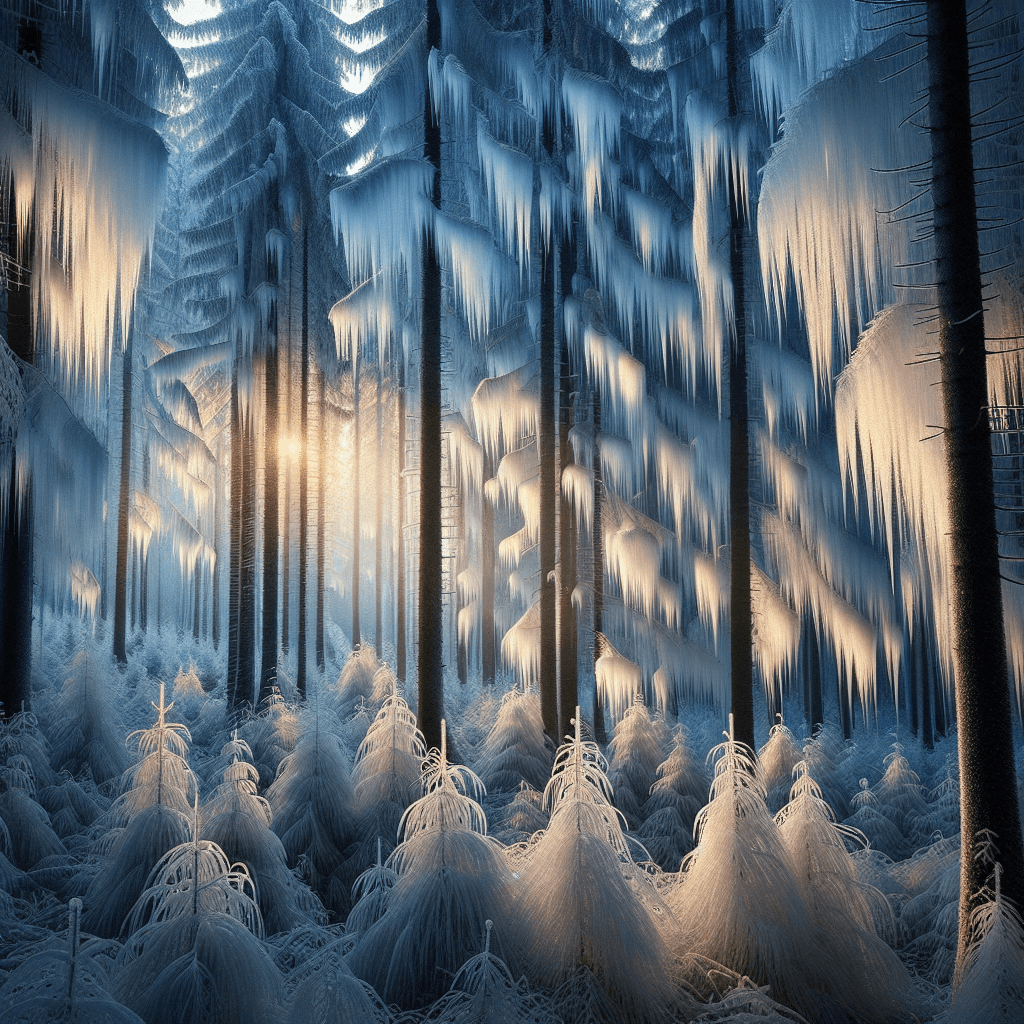Why does some wood in the forest grow long, silky hair made of ice
Stumbling upon a fallen branch sprouting what looks like fine, silky hair made of ice feels like discovering magic. The truth behind this rare phenomenon, however, is a fascinating secret hidden deep within the wood itself.


Too Long; Didn't Read
TLDR: A specific fungus in rotting wood, combined with humid air and temperatures just below freezing, pushes water out of the wood's pores. The fungus prevents the water from freezing into a solid crust, forcing it to form thin, hair-like ice strands instead.
Unraveling a Frosty Mystery: Why Does Some Wood in the Forest Grow Long, Silky Hair Made of Ice?
Have you ever walked through a damp, winter forest and stumbled upon a piece of wood that looks like it has sprouted a magnificent mane of white, silky hair? This ethereal, candy-floss-like phenomenon is not a trick of the light or some strange plant. It's a rare and beautiful natural spectacle known as "hair ice," "frost beard," or "ice wool." While it looks magical, its formation is the result of a precise and fascinating collaboration between physics and biology. This post will delve into the science behind this frosty marvel, exploring the unique fungus and the perfect conditions required to spin ice into silk.
What Exactly is Hair Ice?
At first glance, hair ice might be mistaken for common frost. However, a closer look reveals its unique structure. Unlike the coarse, crystalline patterns of typical frost, hair ice consists of incredibly fine, individual strands of ice, each with a diameter of about 0.02 mm, similar to a human hair. These strands can grow several centimeters long, forming silky, flowing locks that curl and wave, perfectly tracing the grain of the wood they emerge from. The ice is so delicate that it will melt almost instantly upon touch and can vanish with a slight breeze or a rise in temperature.
The Fungal Catalyst: The Secret Ingredient
For nearly a century, the cause of hair ice was a scientific puzzle. The theory that a fungus was involved was first proposed in 1918 by the famous geophysicist Alfred Wegener, the originator of the theory of continental drift. However, it wasn't until 2015 that researchers in Germany and Switzerland definitively confirmed his hypothesis.
The key to hair ice formation is the presence of a specific fungus: Exidiopsis effusa. This fungus lives within the pores of decaying, water-logged hardwood branches. As temperatures drop to just below freezing, the fungus’s metabolic processes prevent the water inside the wood from freezing solid. This supercooled water is then gradually pushed out through the wood’s fine pores in a process called "ice segregation."
Crucially, the fungus releases complex organic compounds, likely lignin and tannin fragments, that act as an inhibitor. This inhibitor prevents the extruded ice from recrystallizing into large, clunky frost crystals. Instead, it allows the water to freeze at the base of each strand, continuously pushing the existing hair outwards and enabling the formation of long, stable, and silky-smooth filaments. Without the fungus, you just get a crust of regular ice.
The Perfect Recipe: More Than Just a Fungus
While the Exidiopsis effusa fungus is the essential artist, it needs a very specific canvas and studio conditions to create its masterpiece. The formation of hair ice depends on a delicate balance of several environmental factors:
- Wood Type: Hair ice forms exclusively on moist, rotting wood from broadleaf trees, such as beech and oak. The porous structure of this type of wood is ideal for the process, and it's the natural habitat of the necessary fungus.
- Temperature: The air temperature must be hovering just slightly below freezing (0°C or 32°F). If it gets too cold, the water freezes too quickly inside the wood, and if it's too warm, the ice will simply melt.
- Humidity: The air needs to be very humid. This high moisture content slows down sublimation, the process where ice turns directly into vapor, which would otherwise cause the delicate hairs to disappear.
- Calm Air: Even the gentlest wind can shatter the fragile ice structures, so a still, calm winter morning provides the best chance to witness it.
A Fleeting Wonder
Hair ice is a beautiful reminder of the intricate and often hidden processes at work in the natural world. It is the product of a unique partnership between a fungus and the physics of ice formation, occurring only when a specific set of conditions align perfectly. So, the next time you take a quiet walk through a damp hardwood forest on a calm winter morning, look closely at the fallen branches on the ground. You might just be lucky enough to witness this fleeting, frosty magic for yourself—a true testament to nature’s subtle artistry.
More Articles

What creates the warm crackle sound unique to vinyl records?
That iconic warm crackle is more than just dust and nostalgia—it's the sound of a microscopic story of friction and physics being told in real-time.

Why do some insects build and wear a backpack made from the corpses of their victims?
For some of nature's tiniest predators, the best defense is a grisly offense—building a protective shield from the corpses of their vanquished prey.

Why are Earth's deserts not random, but aligned in two distinct belts?
It’s not a coincidence that the world's great deserts are aligned in two perfect bands; they are the direct creation of massive, invisible rivers of air that perpetually circle the globe.